Thingplatz - architecture in the service of Propaganda
In 1936, Hitler’s personal architect (and future Reich Minister of Armaments and Munitions) Albert Speer went to Greece to study the heritage of ancient culture. And all because Hitler believed that it was precisely in ancient culture, or more precisely, in architecture, that modern architects should draw inspiration to create buildings that would reflect the full power and grandeur of his regime: “It would be wrong if we began with the construction of workers’ quarters and houses. All this will come by itself. Marxist and bourgeois governments have already done this. … Since the time of the medieval cathedrals, we are the first to once again set before artists the task of realizing truly daring and bold projects. Not shelters or residential buildings, but powerful and large-scale structures – like those of Ancient Egypt and Babylon – are the signs of a new high culture. I want to begin with this. In this way I will give my people and my time the stamp of incomparable spiritual greatness.” Later, Speer was put in charge of the reconstruction of Berlin, which, according to the Fuhrer's plan, was to become the capital of the world and receive a new name - World Capital Germany - Welthauptstadt Germania.
But the capital of the Reich could only be one city. As for the other cities of the Third Reich, they also got a piece of antiquity in the form of those very "Tingplatz".
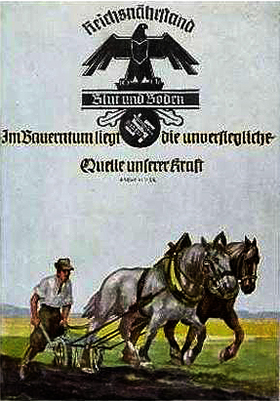
The "spiritual greatness" of the people must be supported. Reich Minister of Propaganda Joseph Goebbels was convinced that if the monumentality of ancient buildings was combined with ancient German traditions, with the past of the German people, then there was no better way to support the German spirit. This approach perfectly corresponded to the ideology of "blood and soil" (Blut und Boden), which preached the unity of the native land and national origin. The Propaganda Ministry remembered that the ancient Germans and Scandinavians had such a concept as "ting" - a meeting of free men living in a certain area to discuss important issues and choose rulers. The idea arose to transfer the ancient tings to modern times, tying them to a specific place. Thus, in the Third Reich, a project arose to build tingplatz - open-air amphitheaters where residents of the surrounding lands could gather for mass celebrations and theatrical performances. There even appeared such a concept as tingtheater (or tingspiel) - a mass folk theater, reminiscent of medieval mysteries or theatrical carnivals. Moreover, a special department was created in the department of Dr. Goebbels, which was in charge of tingtheaters and other mass celebrations and processions. Hitler was not a fan of the ideology of "blood and soil", and did not really believe in the effectiveness of tingtheaters. Perhaps, including for this reason, tingtheaters as an element of theatrical culture did not become a truly popular phenomenon in German society and did not exist for long (as, incidentally, did the Third Reich itself), but tingplatz have survived to this day.
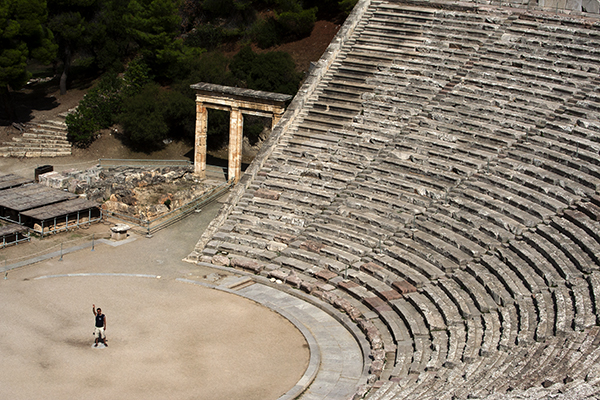
From an architectural point of view, as already mentioned above, tingplatz were open-air amphitheaters. The sizes of the amphitheaters and, accordingly, their capacity, varied. The largest were designed for tens of thousands of spectators. Picturesque places were chosen for the construction of tingplatz, often imbued with the spirit of ancient Germanic legends, serving as a kind of natural decoration. Despite the differences in the natural landscapes into which the architects fit the tingplatz, they all pursued one goal - to concentrate the viewer's attention on the central point: the stage with a simply decorated space, where the theatrical performance itself took place.
According to various sources, the Nazis planned to build from 400 to 1,200 Tingplatz. But the plans remained just plans: no more than 60 Tingplatz were built. Moreover, the construction of some of them was financed by the Goebbels department. Some of the Tingplatz were unofficial, i.e. Their construction was not officially approved by the Reich Ministry of Propaganda (apparently, the money for their construction came from local budgets and donations from citizens, as was the case several decades earlier with the construction of the "monument to the fallen in the First World War in the form of a rotunda, on which there was an inscription: "Born as a German. - Lived as a fighter. - Fallen as a hero. - Reborn as a people." Later, an amphitheater was built. The arena was used for mass celebrations on Labor Day, for Nazi party events dedicated to the Fuhrer's birthday, and also during school holidays. Both the rotunda monument and the amphitheater itself are well preserved. And although the plaques with the names of the fallen soldiers are missing, you can still read the dedication inscription on the rotunda.
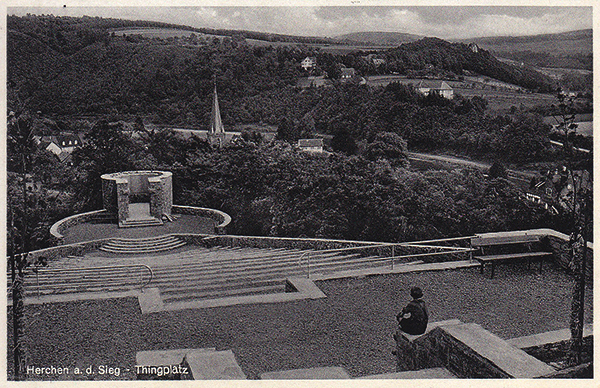
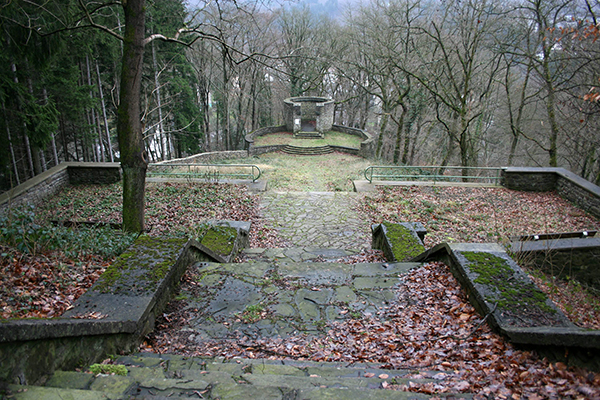
The Tingplatz in Borna, south of Leipzig, was designed in 1933 by architect Fritz Schaller. Construction began in 1934, and the Tingplatz opened in 1935. In 1936, the Tingplatz was renamed the "Place of National Unity" (Stätte der Volksgemeinschaft). After the end of the war, the GDR government renamed the arena the People's Square - Volksplatz, which it still bears today. The former Tingplatz is used for various open-air concerts, and is home to the largest permanent cinema screen in Europe (504 sq. m).
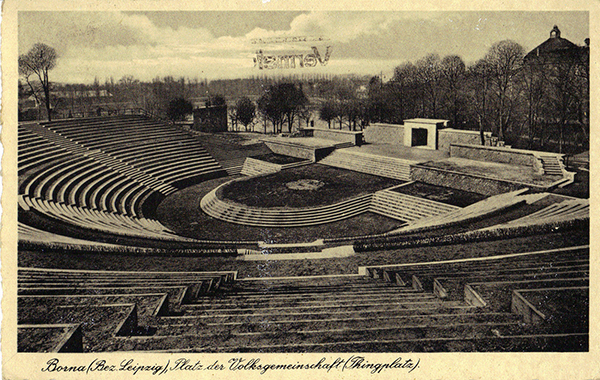
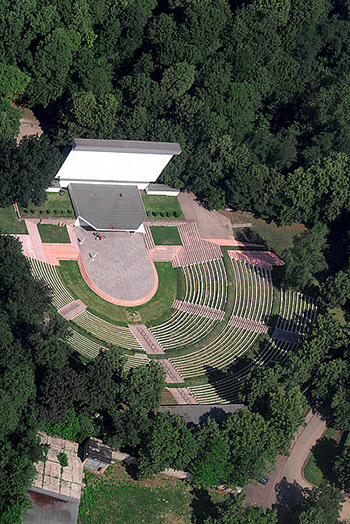
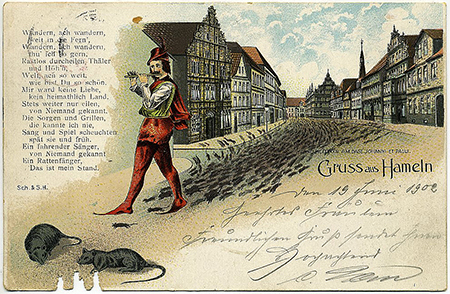
The Tingplatz on the Bückeberg hill, located about five kilometers south of the Lower Saxon town of Hameln (the same one from the famous legend about the Pied Piper) was the site of the All-German Harvest Festival (Reichserntedankfest) during the Third Reich. In common parlance, this holiday was called the Bückebergfest and was celebrated on the first Sunday after Michaelmas (the Catholic Church celebrates it on September 29). Along with the NSDAP Imperial Rally in Nuremberg and the already mentioned Labor Day on May 1 (since 1934 this holiday has been called the National Holiday of the German People - Nationaler Feiertag des deutschen Volkes) in Berlin, the Bückenbergfest from 1933 to 1937 was the most massive propaganda event of the Third Reich and was in line with the same ideology of "blood and soil". It was usually attended by the highest-ranking leaders of the Third Reich, from Reich Minister of Food Richard Darré to Goebbels and the Führer himself.
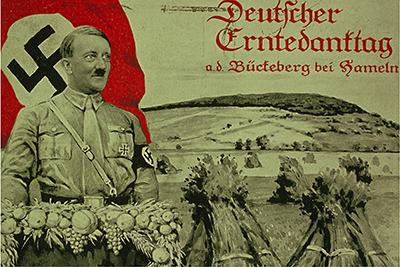
Albert Speer himself designed the Tingplatz for the Harvest Festival. The importance of this arena was also emphasized by the fact that it was called Reichsthingplatz. Initially, the size of the entire area was to be 120,000 square meters, and later the size was increased to 180,000 square meters (how can one not mention the tendency of all totalitarian regimes to gigantism in literally everything, from caps to buildings). The oval-shaped area of 300 by 600 meters lay on the northern slope of the Bückeberg hill. Along its longitudinal axis, the so-called "Führer's Road" was laid, along which Hitler had to walk through the masses of spectators and participants to the honorary tribune located at the top of the area.
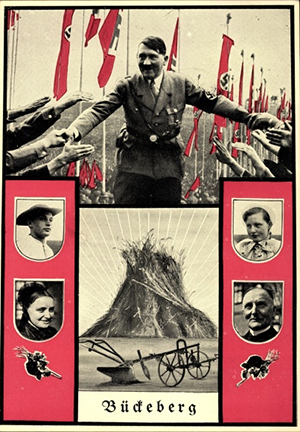
In mid-August 1933, 1,800 members of the Reichsarbeitsdienst (RAD) began excavation work to plan the future site. Although the Tingsplatz was already completed in 1934, expansion work continued until 1937. 450 members were permanently present in the three nearby RAD labor camps, whose task was to provide the arena with electrical cables for lighting and the numerous loudspeakers and microphones (around 2,000 of the latter were used during the Bückebergfest), as well as work on the construction of a drainage system. A train station was built in the nearby village of Tündern by 1936 especially for the Führer's train. Speer and Darré's plans to surround the Reichstingplatz with a wall and build an autobahn to it were never realized.
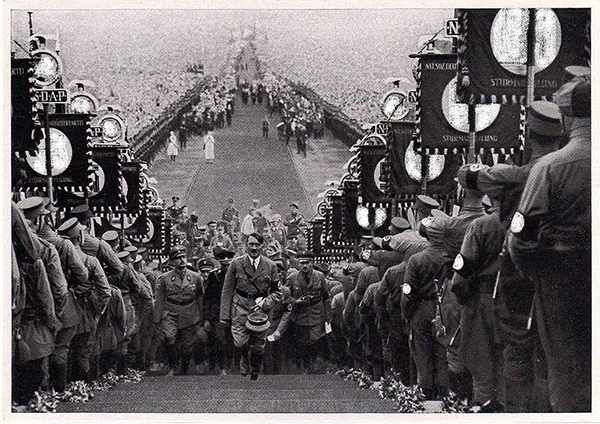
Immediately before the festival, the number of service personnel increased to 1,500 people. The number of participants and spectators of the Bückebergfest was simply enormous: in 1934 – 700,000 people, in 1937 – from 1.2 to 1.3 million people. Even if we take into account that these figures of the propaganda ministry were exaggerated, they are still impressive.
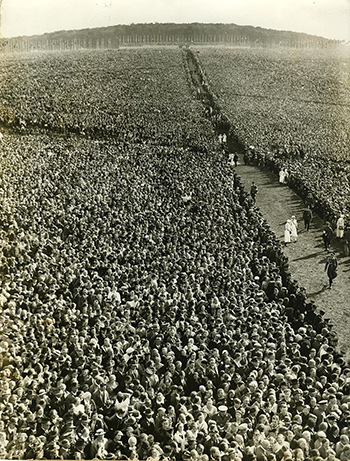
At present, there is practically nothing left of Reichstingplatz. The remains of the foundation of the honorary tribune have been preserved, traces of the "Fuhrer's road" are visible, and the site where the festival took place is visible on the ground. There was a time when the territory was ready to be given over to residential development. Despite the resistance of local residents, the area where the All-German Harvest Festival once took place, through the efforts of historians, received the status of an architectural monument.

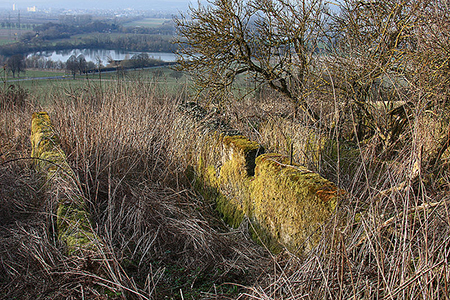
The Tingplatz on the Heiligenberg mountain near the city of Heidelberg (Baden-Württemberg) was designed by the architect Hermann Alker (1885-1967). The same fighters of the RAD labor front and Heidelberg students took part in the construction of the facility, which began in 1934. The amphitheater consisted of 56 rows and was designed for 20,000 spectators. Goebbels gave a speech at the opening of the Tingplatz on June 22, 1935. The Tingplatz was equipped with the most modern sound and lighting equipment of that time. Large-scale performances "The Road to the Reich" and "Oratorium on Labor" were staged in the arena. In 1939, a performance was shown here - Schiller's "Bride of Messina". The Tingplatz has not been used since the beginning of World War II. Despite the fact that the amphitheater has survived to this day and is used for open-air concerts (in particular, Montserrat Caballe and Placido Domingo have performed here), the infrastructure is practically not developing and everything is gradually falling into disrepair.
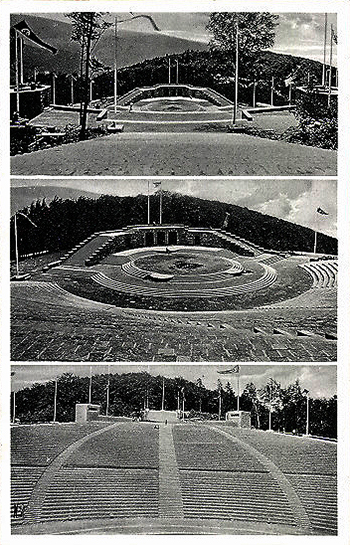
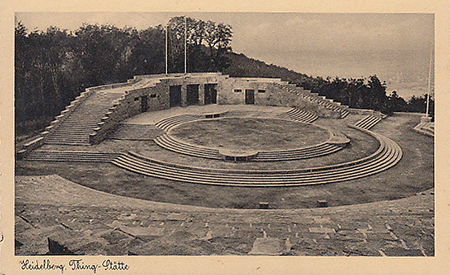

The famous Lorelei rock, located near the town of St. Goarshausen, was the perfect location for the Tingplatz, because the German siren, the river maiden Lorelei, lured ships passing by on the Rhine with her magical singing right here. The place, shrouded in legends and sung about by poets, was noticed back in 1932, before the Nazis came to power. It was planned to build an open-air theater here. In 1933, with the advent of the Nazi Tingplatz construction program, the plans changed, and the Frankfurt architect Hermann Senf (1878-1979) developed the Tingplatz project. The first shovel was stuck into the ground on the site of the future amphitheater on April 30, 1394, in a ceremonial atmosphere, with a meeting of Nazi bigwigs and RAD orchestras. The construction was carried out by the same RAD members until 1939. The opening of the arena in June 1939 was accompanied by a production of Schiller's "Wilhelm Tell".
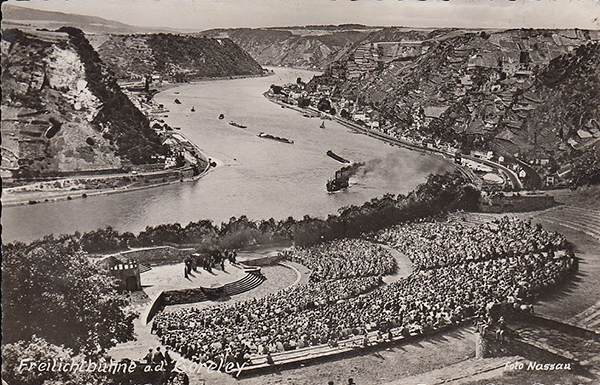
The Tingplatz was designed to accommodate 4,300 people seated and 8,000-10,000 standing people.
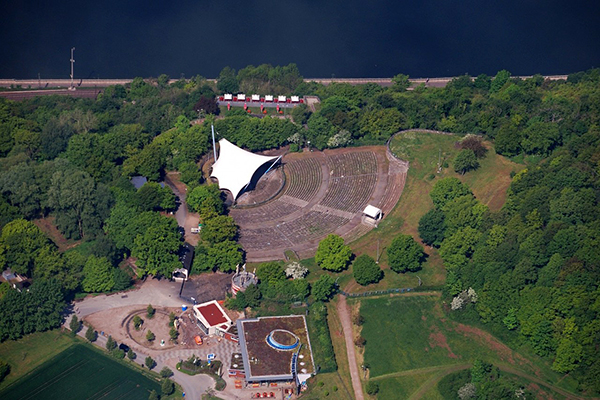
The Tingplatz "Lorelei" was and remains the most famous open-air theatre in Germany. The amphitheater and stage have remained virtually unchanged to this day. In the post-war period, the arena was used for theatrical productions and classical concerts, and since 1976, with the performance of the group Genesis, rock concerts have been held here. Metallica, Gary Moore, Chris Rea, Lynyrd Skynyrd, Udo Jürgens, Carlos Santana, Simple Minds, Sting, Joe Cocker, UB40, REM, U2, Whitesnake, The Kinks, Muse and others have performed on the stage of the Lorelei Theatre over the years.
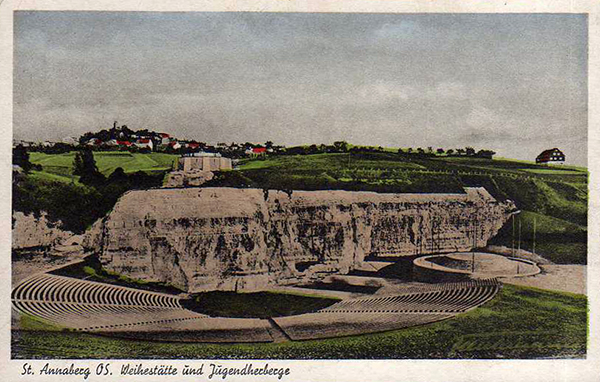
In the territory of today's Poland, in the Opole Voivodeship, there is another Tingplatz, striking in its scale. We are talking about the amphitheatre at Mount St. Anne (German: Sankt Annaberg; Polish: Święta Anna). Already at the end of the 15th century, a church was built on the mountain, which had been considered sacred since pre-Christian times. Then a Franciscan monastery was founded here. Initially, there was a limestone quarry on the site of the Tingplatz, the mining of which ceased after the First World War. In 1921, Mount Annaberg, being a height dominating the area, became the site of a fierce battle between the German Freikorps* and Polish insurgents during the Third Silesian Uprising, which began immediately after the announcement of the results of the plebiscite on the division of Silesia between Germany and Poland . Later, Mount Annaberg became a symbol of the struggle of the Silesian Germans for their national identity. In 1934-1936, the Tingplatz was built in a former quarry at the foot of the mountain according to the design of the Berlin architects Franz Böhmer and Georg Petrich. It was designed to accommodate 7,000 seated and 20,000 standing spectators. Another 20,000 spectators could be accommodated in the aisles and on the intermediate platforms between the sectors of the amphitheater. Thus, the total capacity of the Tingplatz approached 50,000 people.
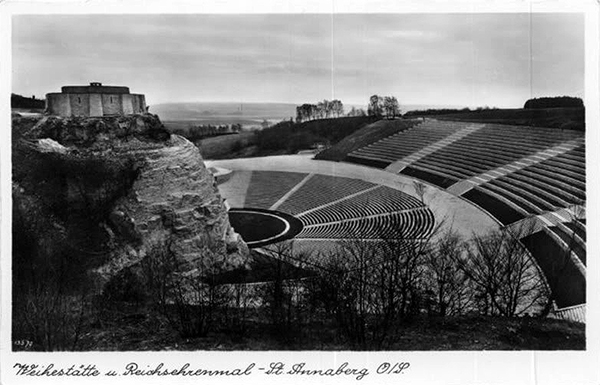
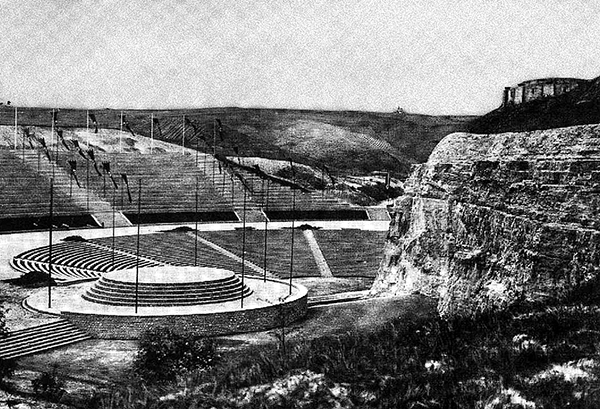
In 1936-1938, a monument in the form of a rotunda was erected above the Tingplatz to the Freikorps soldiers who died in 1921, whose remains were placed inside the rotunda in the so-called "Hall of the Dead" (Totenhalle), in the center of which stood a 14-meter sculpture of a dying warrior.
Ten minutes' walk from the Tingplatz and the mausoleum, parking spaces were set up for cars on the new Reichsautobahn. According to the Nazi propagandists, the monument-mausoleum and the Tingplatz were supposed to be a counterweight to the monastery located on the top of Annaberg. But after the monument's unveiling in May 1938, the Tingplatz was no longer used, and the number of people coming here was far fewer than those wishing to visit the monastery.
In the autumn of 1945, the mausoleum was blown up, and the remains of the German Freikorps soldiers were reburied in a local cemetery. In 1955, a monument to Polish insurgents was erected on the site of the mausoleum. Despite the fact that in 2004, the former Tingplatz and the memorial to Polish insurgents were declared an architectural monument, the complex is in poor condition.
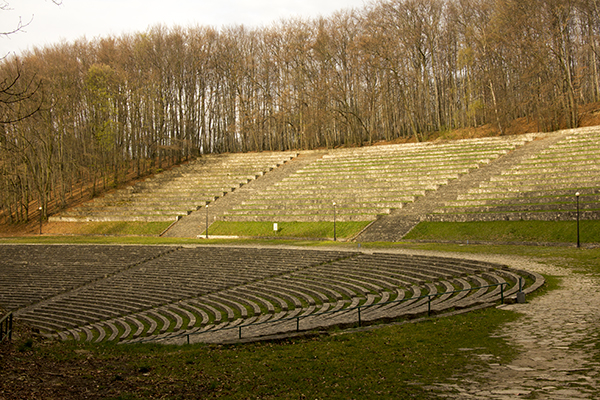
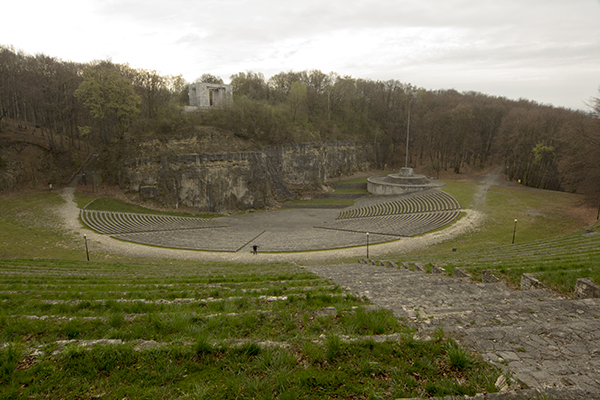
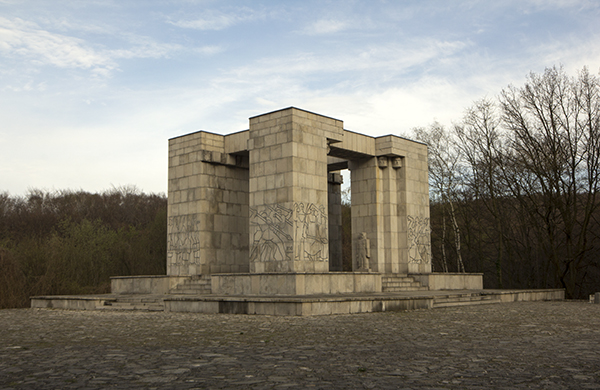
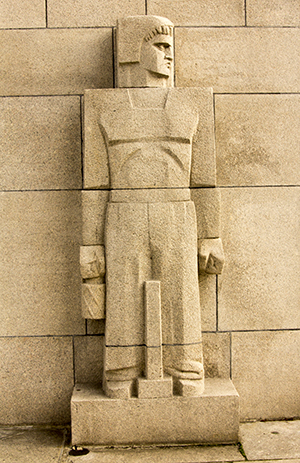
The Tingplatz near Kamenz in Saxony was built in 1934-1935. After World War II, various concerts took place on the stage. Today, it is one of the largest open-air venues in Germany, like the Lorelei Theater, and is used for rock concerts.
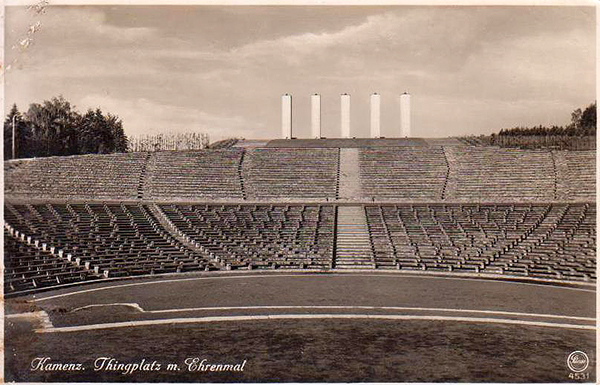
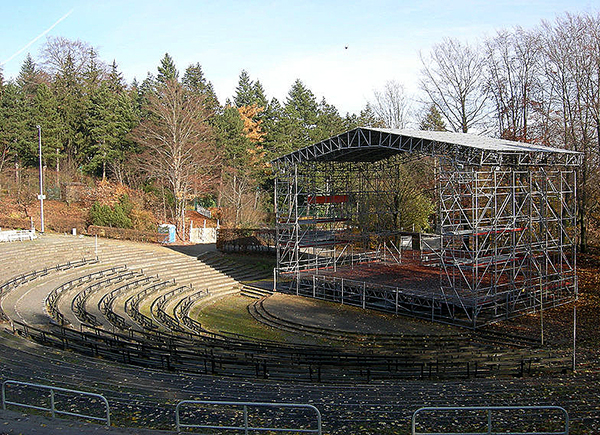
Also in Saxony, southwest of the city of Schwarzenberg, in a former granite quarry at the foot of the Rockelmann mountain, there is another Tingplatz, built according to the design of the already mentioned Ludwig Moshamer. At its widest point, the amphitheater was 102 m and was designed for 6,500 seated and 5,600 standing places. Construction began on April 7, 1934, with the help of 1,300 soldiers of the Reich Labor Service. The initial construction estimate of 320,000 Reichsmarks was significantly exceeded, so the completion date of the facility was postponed. The opening took place only on June 25-26, 1938. Together with the Tingplatz in Born and Kamenz, it was used in pre-war times for open-air theater productions. Since 1950, the amphitheater has been named after the first (and only) president of the GDR, Wilhelm Pieck. Now this amphitheater is called the "Waldbühne" (Forest Stage) and is the second largest in Germany (15,000 seats). It is used for rock concerts.
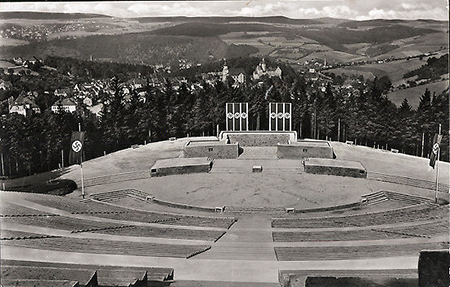

For the 1936 Summer Olympics, a sports complex (Reichssportfeld) was built in Berlin, including, among other things, the amphitheater-Tingplatz, located northwest of the Olympic Stadium. The Olympic complex was built in 1934-1936 according to the design of the architect Werner March (1894-1976). Tingplatz, designed for 22,000 spectators, was named after Dietrich Eckart (1868-1923), a playwright, one of the founders of the NSDAP and a participant in the Beer Hall Putsch.
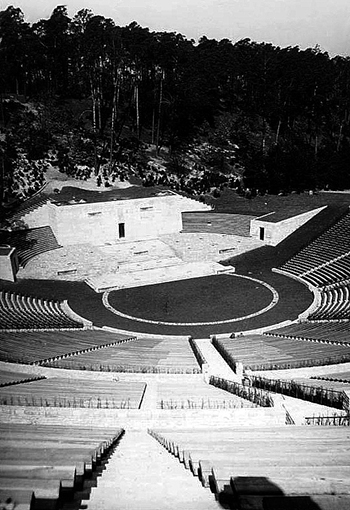
The official opening of the Tingplatz took place on 2 August 1936, one day after the opening of the Olympic Games, with the premiere of a drama by Eberhard Möller (1906-1972) called "Frankenburg Dice Game" (Frankenburger Würfelspiel). The play was specially written for the Tingtheater and was a great success (and was subsequently performed at various Tingplatz).
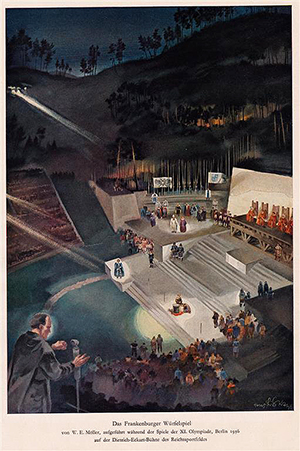
During the Olympic Games, Handel's oratorio Hercules was also performed in the arena.
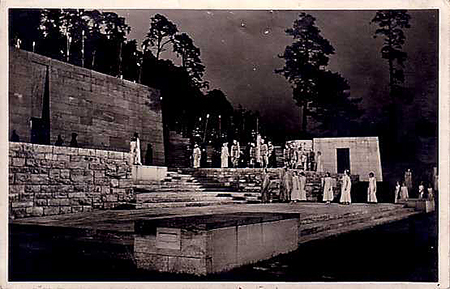
It was also used for gymnastics competitions. After the games, Gluck's Orpheus, Wagner's Rienzi, and smaller dance and choral productions were shown here.
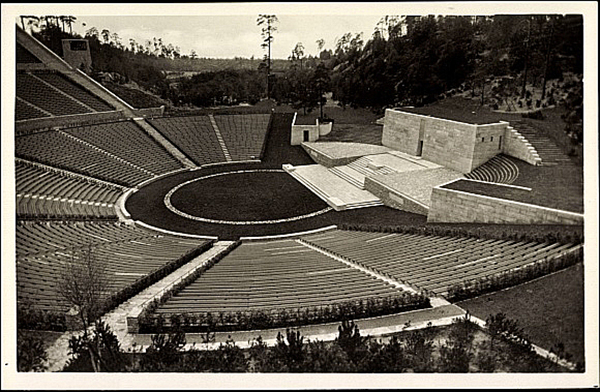
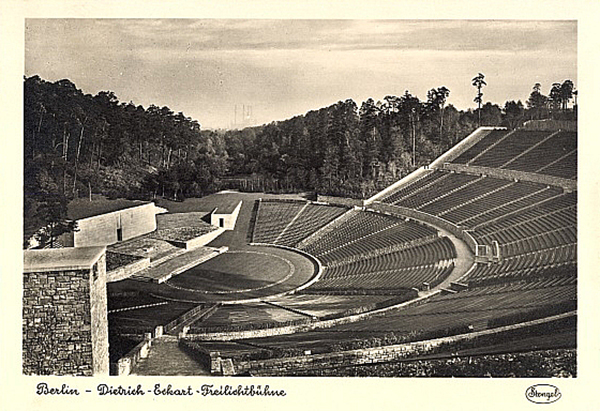
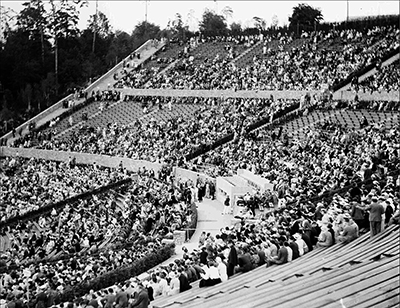
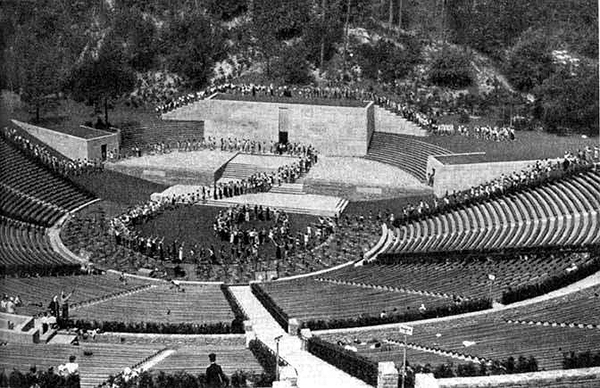
After the war, the Olympic complex ended up in the British occupation zone. All the buildings became accessible to the public in 1948. The Tingplatz, renamed the Berliner Waldbühne, was used to show films from the Berlin Film Festival and, from the early 1960s, for boxing matches and rock concerts. On September 15, 1965, spectators, outraged by the fact that the Rolling Stones ended their concert after only 25 minutes, rioted in the arena. The police spent several hours trying to pacify the crowd, which was smashing everything around them. A Bild reporter who found himself in the thick of things later wrote: “I know what hell is.” It took several years to restore the destroyed arena.
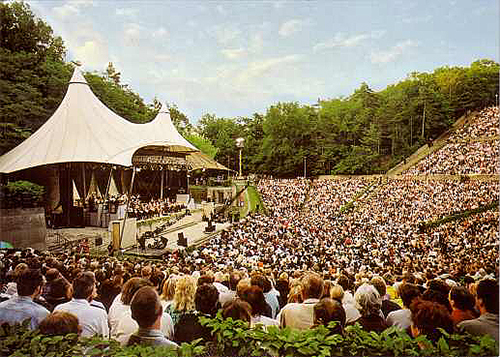
During their European tour on June 10, 2014, the Rolling Stones performed at this arena again (this time everything worked out :-). Over the decades, the "Berlin Forest Stage" has seen many world-class stars: Bob Marley, Barbra Streisand, Tina Turner, Eric Clapton, Rod Stewart, Queen, Muse, Metallica and even the Dalai Lama.
Unlike all the above-described Tingplatz, the Tingplatz in the Ordensburg** Vogelsang was not public. It was built in 1934-1936 for the cadets (students) of this educational institution. Small in size, semicircular in shape, it, like the entire Ordensburg, was located on the slope of a hill, between the barracks and the sports ground. Until 2006, the Vogelsang complex was occupied by units of the Belgian army, and then it became accessible to the public.
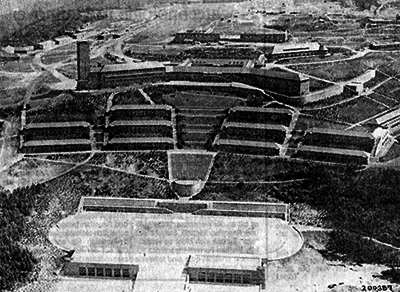
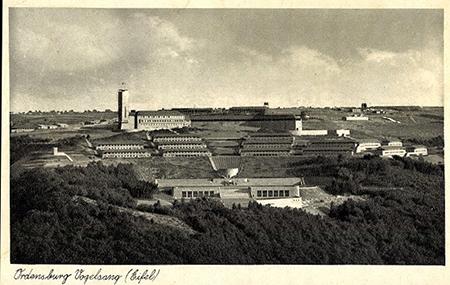
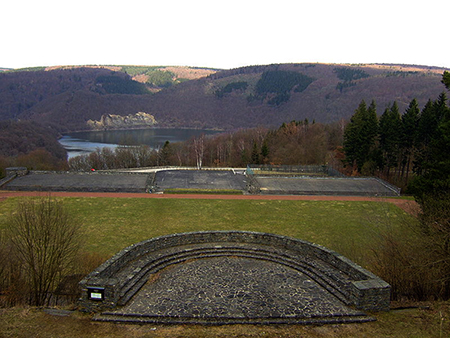
The heyday of the Tingtheaters was very short - from 1934 to 1936. Then the Reich Ministry of Propaganda almost completely stopped funding the construction of Tingplatz.
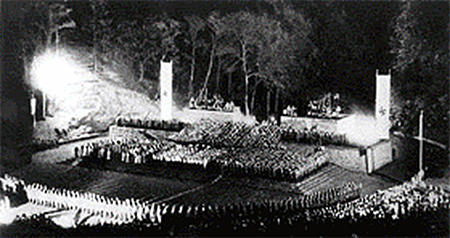
___________________________________
* Freikorps — free corps, volunteer corps. A type of voluntary military-patriotic formation in Germany and Austria in the 18th-20th centuries. They took part in various actions to suppress the actions of members of the Communist Party and the uprisings of Polish nationalists in Silesia in 1919-1921. Many members of the Freikorps later joined the NSDAP.
** Ordensburg (Ordensburg ) was a type of elite party educational institution in the Third Reich. Students (junkers) of the Ordensburgs after graduating from the educational institution were supposed to make a career as NSDAP functionaries.
Tingplatz of East Prussia
Sources:
Plenkov O.Yu. Secrets of the Third Reich. Culture at the Service of the Wehrmacht. — M., OLMA Media Group, 2011.
Wikipedia
www.händelstadt-halle.de
www.schwarzenberg.de
www.landesarchiv-bw.de
www.dhm.de
bueckebergfilm.wordpress.com
www.dresden-und-sachsen.de
www.deutsche-digitale-bibliothek.de
www.ferienwohnung-zimmer-berlin.de
www.hans-dieter-arntz.de
www.thirdreichruins.com
